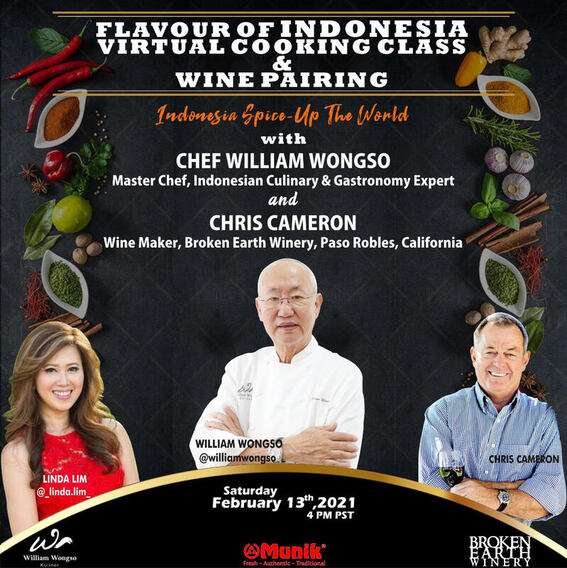 Excerpt from Eat Smart in Brazil, by Joan Peterson The coastal Tupi Indians were the first aboriginal people to interact with the Portuguese when they arrived in the New World in the early 1500s. They taught the early colonists how to adapt to their new environment, how to use the many unusual foods growing there, and how to cultivate these crops since the humid, tropical environment of the northeast was unsuitable for wheat and several other crops the Portuguese colonists depended on. Out of necessity, the Portuguese were forced to develop many new eating habits based on indigenous foods. They quickly learned from the native Brazilians how to make manioc meal, their main food staple, which derived from the manioc tuber, a carbohydrate-rich food that is easy to propagate but difficult to process, at least for the bitter variety, which is poisonous when raw. It is astonishing that the Indians determined that these tubers were edible at all. To detoxify manioc, the tubers had to be peeled and grated and the pulp put into long, supple cylinders—called tipitis—made of woven plant fibers (see illustration below). Each tube was then hung with a heavy weight at the bottom, which compressed the pulp and expressed the poisonous juice. The pulp could then be removed, washed and roasted, rendering it safe to eat. The product was a coarse meal or flour known as farinha de mandioca, which is as basic to the diet of Brazilians today as it was to the early Indians. Starch settling out from the extracted juice was heated on a flat surface, causing individual starch grains to pop open and clump together into small, round granules called tapioca. The extracted juice, boiled down to remove the poison, was used as the basis of the sauce known as tucupí. In the northern region of modern Brazil, several noted and delicious dishes incorporate this traditional sauce. The Indians also introduced the Portuguese to the non-poisonous tubers of sweet manioc, which are somewhat fibrous but considerably easier to prepare. These tubers are pared, boiled for several hours to soften them, and eaten like potatoes. Farofa de Manteiga
(Side dish of) buttered manioc meal. Serves 4. From Eat Smart in Brazil by Joan Peterson 2-3 T. Vegetable oil 1 small onion, coarsely chopped 1 egg 1 c. manioc meal 2 T. fresh parsley, minced salt and pepper to taste Sauté onion in butter until soft, but not browned. Reduce heat and add egg, stirring until scrambled and well mixed. Gradually add manioc meal until the mixture becomes golden and resembles toasted bread crumbs. Add salt and pepper and stir in parsley.
9 Comments
by Joan Peterson, publisher and co-author of Eat Smart in India: How to Decipher the Menu, Know the Market Foods, & Embark on a Tasting Adventure 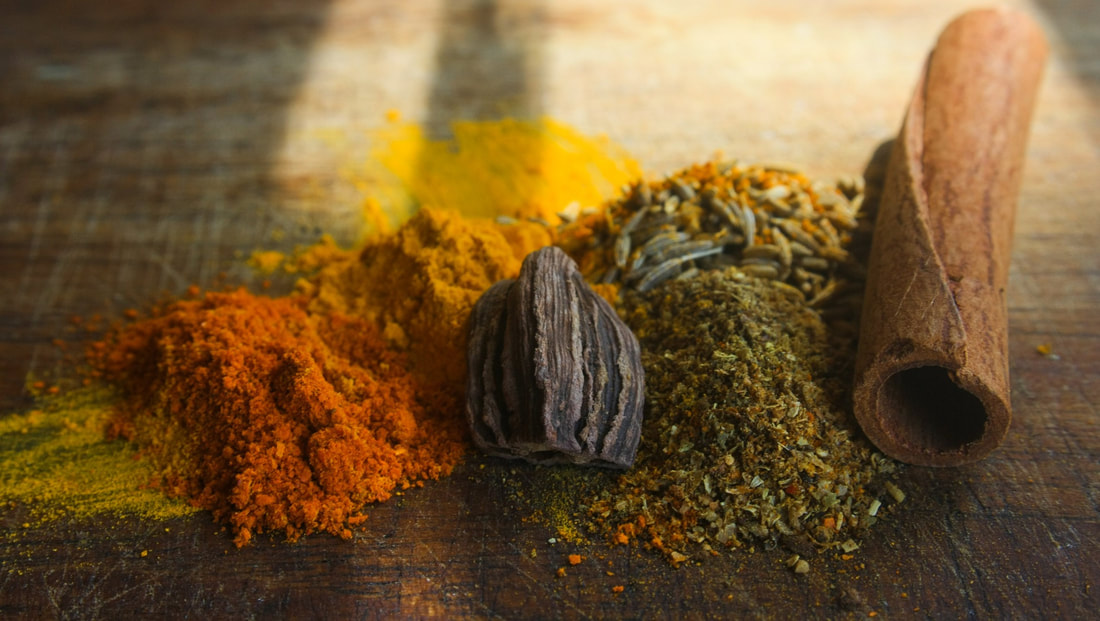 Spices and herbs are the cornerstone of Indian cookery. Traditionally they are freshly ground twice a day in a shallow stone mortar or on a flat basalt stone using a basalt rolling pin. Chefs and home cooks alike are well versed in the individual characteristics of each seasoning. They know which spices enhance the flavors of particular foods, how much of each spice should be added to a dish, and in what order spices should be added in the cooking process so that no spice predominates or tastes “raw.” Artful blending of different seasonings has created the subtle nuances in the characteristic tastes of Indian cuisine. In general, spice mixtures (masalas) are either wet or dry. Wet mixtures are moistened with water, oil, vinegar or coconut milk to make a paste or more liquid mixture, and they cannot be stored. Dry mixtures mainly are powdered. In Indian cooking there is no all-purpose curry powder. This is a commercial mixture created during colonial times by the British, who still use it rather indiscriminately to make “Indian” dishes. To an Indian, a curry (kari) is a sauce, or a dish with sauce. Wet mixtures of fresh spices predominate in southern Indian cooking. Here the main staple is rice, and although it typically is boiled and eaten plain, several flavored sauces accompany the rice to moisten it. In northern Indian cooking, many dishes tend to be cooked without much liquid, and as such are easier to scoop up with pieces of bread as a utensil. Without sauce to cook in, spices are tempered in a small amount of clarified butter or oil to release their aromas before the main ingredients are added to the pan. In some recipes, tempered spices are added at the end of the cooking process.
Indians favor the visual appeal of certain spices. Turmeric gives a bright yellow color to rice and potatoes. The very expensive saffron lends an orange-yellow color besides its incomparable, heady flavor. Mild red chile peppers grown in Kashmir are prized for the rich red color they impart. Another red colorant, an edible extract called mowal, is made by boiling cockscomb flowers. Dried rind of the red mango (kokum) turns food somewhat pinkish-purple. We especially like the refreshing, slightly tart drink (kokum kadi) of fresh coconut milk flavored with this rind. 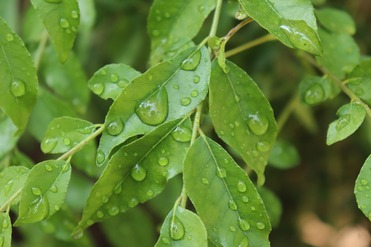 Fresh sprig of fragrant curry leaves. Sizzling the leaves in a little oil accentuates their aroma and slightly bitter taste. This spice provides a signature flavor to southern Indian dishes. Fresh sprig of fragrant curry leaves. Sizzling the leaves in a little oil accentuates their aroma and slightly bitter taste. This spice provides a signature flavor to southern Indian dishes. Among the unusual spices to experience is asafoetida (hing), a strong, sulfur-smelling, milky gum resin. A pinch of powdered resin cooked in hot oil or clarified butter and added to certain dishes enhances the flavor. A trace of the odor component of the resin lasts for a short while in the food. Curry leaves (kari patta) are small, dark-green leaves with a distinct aroma and slightly bitter taste. They are sizzled in a little clarified butter or oil to accentuate their flavor. Fenugreek leaves (kasoori methi) have a unique, slightly bitter flavor. It is an acquired taste, which can be sampled in aloo methi, diced potatoes fried with fresh fenugreek leaves. Bits of dried fenugreek leaves occasionally are added to flatbread dough. Kewra essence is extracted from the flowers of the screwpine and is used in rice- or corn-flour noodles called falooda. These flavored noodles are an ingredient in a drink, which is also called falooda, and they accompany Indian ice cream made with reduced milk. Certain lichens are used as herbs. Kalpasi is a lichen that grows on cinnamon trees and on trees near the seashore during the monsoon. 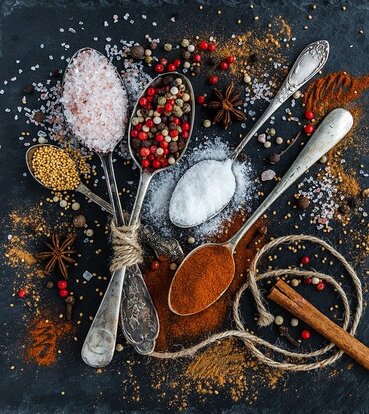 Several kinds of salt are used in Indian dishes. Some are flavored salts mined as crystals from underground dry sea beds. Each imparts a characteristic flavor based on its chemical composition. For example, black mineral salt (kala namak) adds zest to snacks (chaat), fruit salads and vegetables. Its grayish-pink crystals become grayish-brown when ground. Countless outdoor markets exist in India. There will be many opportunities to see all the amazing spices that are used in Indian cookery. 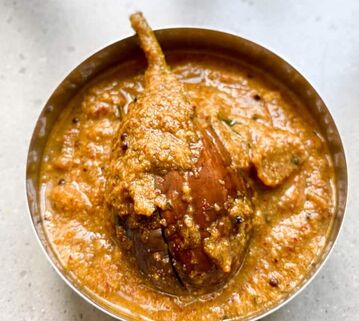 photo: cookingandme.com photo: cookingandme.com Enai Katrikey Aromatic sautéed eggplant. Serves 4. 4 T. vegetable oil 1 1/2 lbs. baby eggplants, each cut into 4 pieces 1 small onion, chopped 1 clove garlic, sliced 1 T. grated fresh ginger 1/2 t. cumin seeds 1 t. black mustard seeds 1/2 t. black peppercorns 1-inch piece cinnamon stick 1/2 c. grated fresh coconut 4 dried, hot red chile peppers 1 T. coriander seeds 1 t. fennel seeds 1 t. star anise 4 whole cashew nuts 1 T. coconut oil 10 curry leaves 1/4 t. turmeric powder 1/2 t. salt 3/4 c. water Heat oil in a frying pan and sauté eggplant until soft. Remove from the pan and set aside. Fry onion, garlic and ginger for 1–2 minutes over high heat, and set aside. In the same pan, dry roast cumin, 1⁄2 teaspoon mustard seeds, peppercorns, cinnamon, coconut, two red chile peppers, coriander, fennel, star anise and cashew nuts until dark brown. Let cool. Grind dry-roasted spices with fried onion, garlic, ginger, and 1⁄4 cup water into a fine paste and set aside. Heat coconut oil in a frying pan over high heat until shimmering. Add 1⁄2 teaspoon mustard seeds, two red chile peppers and curry leaves. Cover the pan and let seeds sputter. When sputtering slows down, remove spices from the pan and set aside. Return partly cooked eggplant to the pan. Add turmeric, salt, spice paste and 1⁄2 cup water. Mix well and cook for 5 minutes over medium heat or until the eggplant is completely cooked. Garnish with fried mustard seeds, red chile peppers and curry leaves.
The following is an excerpt from Eat Smart in Sicily, by Joan Peterson and Marcella Croce, published by Ginkgo Press, Inc. To purchase Eat Smart in Sicily, click here. 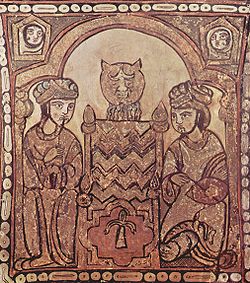 Photo credit: Wikipedia Photo credit: Wikipedia Sicily passed into the hands of Arab Muslims in 902 after a long, determined campaign. Arab raids on Byzantine Sicily began as early as the 7th century. The island of Pantelleria fell in 700. An invasion in 827 near Mazara del Vallo on the southwestern coast of Sicily was successful, and more cities were taken. But several subsequent sieges were necessary before they obtained complete control of the island in 902. Sicily became an emirate, with Palermo its capital, from which the Arabs ruled until 1091. Palermo became adorned with mosques and minarets alongside cathedrals. Under the Arabs’ watch, Sicily became one of the wealthiest and most progressive cultures of medieval Europe. The followers of Islam, also known as Saracens, began their assault on Sicily from modern-day Tunisia in North Africa. The group was comprised of Arabs originally from the Arabian peninsula, Spanish Muslims and the indigenous Berbers of North Africa, converts to the Muslim faith. They were destined to have a profound influence on Sicily and her cuisine. The Arabs introduced advanced irrigation technology and revolutionized existing agricultural practices. They constructed canals to bring water from springs and rivers to agricultural areas and cities. In the cities, a network of underground tunnels (kanat) was dug, with the tunnels sloped downward for gravity-based water flow. This water system also fed city gardens and fountains. Remnants of these ancient tunnels still exist in some of the old parts of Palermo. Arabs added a wide variety of new crops and were able to cultivate them on a large scale because of the improvements they had made in water availability. They broke up many of the vast feudal estates, the latifundia, into smaller farms and gardens, freeing the farmers who worked the plots from indentured servitude. Orchards of lemons, oranges, almonds, pistachios and mulberries were established. Sugar cane was grown in the flat coastal areas. Date palms and carob trees were planted. Rice was introduced and was grown in paddies in the eastern part of the island near Lentini. Other new vegetables, fruits and spices brought by the Arabs included eggplant, artichoke, melon, apricot, banana, buckwheat, cumin, tarragon, jasmine and a white grape variety called zibibbo, which later would be used to make sweet wines. Some scholars theorize that Arabs also introduced to Sicily the “naked” wheat variety known as durum wheat, asserting that it had not been grown, at least to any great extent, during Greek and Roman times when Sicily’s extensive output of wheat was of a different “naked” variety known as soft bread wheat. We can leave this matter of debate to molecular archaeologists, because the salient point is that the Arabs introduced some foods of great significance that were made from the hard-grained durum wheat. The most far-reaching of them was dried pasta (pasta secca). Due to its high gluten content, dough made from durum wheat is strong. It can be rolled and cut into many forms that maintain their shapes and patterns, and lasting ridges can be impressed on the surface. When dried, the pasta does not spoil, thus making it suitable for long-term storage and transport. It had been known to the Arabs since about the 8th century. The Arabic word itriyya referred to long, thin strings of dough that were dried before boiling. Itriyya had a tremendous influence on the island’s foodways and far beyond. We know that by the 12th century dried pasta products were manufactured in Sicily for export. Al-Sharif al-Idrisi, an esteemed cartographer in the employ of Roger II, King of the Normans—whose father conquered Sicily and ended Arab rule—was commissioned to create an elaborate map of the world as it was then known. It was to be accompanied by a book detailing, among other things, commerce and production in all the locations shown on the map and visited by al-Idrisi in the 15 years he spent on the project. The map and book, interestingly entitled, A Diversion for the Man Longing to Travel to Far-off Places, were completed in 1154. The book records the presence of mills in the town of Trabia on the northern coast, near Palermo, which were making commercial preparations of dried pasta and shipping large quantities of it to the rest of Europe. Arabs brought the art of making couscous, a painstaking process the Sicilians call incocciata, which involves rolling fine grains of durum wheat (semolina) in circles in a flat bowl while moistening it with water to form small, uniform granules. The granules are cooked by steaming over broth. In North Africa, couscous usually is topped with a meat stew. But in Sicily, where fish are bountiful, couscous typically is topped with fish. In western Sicily, where the Arabic influence was particularly strong—especially in the city of Trapani—this dish (cuscus alla Trapanese or cuscus di pesce) continues to be popular. Skewered and stuffed foods were also a part of the Arab legacy. Typical stuffing combinations include dried currants with bread crumbs. The embodiment of this kind of preparation is involtini alla Siciliana, Sicilian skewered meat rolls. Thin slices of veal or beef are rolled around a mixture of toasted bread crumbs, pine nuts, dried currants and cheese. Three or four of these rolls, interspersed with slices of onion and bay leaves, are placed on a skewer and grilled. The Sicilian sweet tooth was diversified by the Arab’s gift of sugar cane. Prior to this time, honey and a syrupy reduction of grape juice (vino cotto) were used as sweeteners. Each has a distinct flavor that tends to dominate in dishes. The use of cane sugar allowed for the creation of sweets with subtler flavors contributed by other ingredients. Cannoli (“pipes”), arguably Sicily’s most famous dessert innovation with Arab roots, are crispy, fried, hollow tubes made of dough flavored with cinnamon. The addition of wine to the dough creates little air pockets that form and break during frying, giving the shells their characteristic pock-marked surface. The tubes are filled with sweetened ricotta cream, and the ends are decorated with some candied fruit. Cassata, the queen of Sicilian cakes, is assembled from layers of sponge cake and sweetened ricotta cheese surrounded by a shell of marzipan tinted pale green. The cake is iced and lavishly decorated with candied fruit and zucchini preserves. Marzipan itself has an Arab heritage and is used in many confections besides cassata. Most notable are the molded, vividly colored marzipan fruits. Sugary frozen fruit treats were another Arab contribution. A sorbetto (from the Arabic sciarbat), or sorbet, is a frozen, water- based dessert, typically made with fruit juice and puréed fruit In early times a sorbetto was concocted from the juice of citrus fruits and snow brought from the slopes of Mt. Etna. A variation is the granita, a refreshing drink of flavored, crushed ice. The Arabs left their imprint on the ritual of bluefin tuna fishing, an important industry in the Mediterranean since prehistory. Ensnaring tuna in some form of complex, giant undersea trap (tonnara) comprised of interconnected chambers made of net may have originated as early as Phoenician times. Arabs contributed some of the terminology of the tonnara as well as the music of the traditional songs and chants the men sang as they worked. Annually, in anticipation of the spawning migrations, the Arabs assembled a seven-chambered trap west of Sicily in the waters off Favignana, the southernmost of the Egadi Islands. The rais (Arabic for “head”) led his crew of fishermen in carrying out the mattanza (Spanish for “killing”). First he determined that the migrating fish were successfully herded through the chambers via inter-chamber gates to the seventh and final chamber, the “Chamber of Death.” This chamber had a net floor, which then was slowly raised, bringing the fish to the surface. Crowded together without possible escape and wildly thrashing, the fish were dispatched with barbed gaffs and hauled away. Today, overfishing has all but ended the capture of bluefin tuna in the Mediterranean. Involtini di Lampuga Stuffed fish (mahi-mahi) rolls. Serves 2. This recipe was provided by Vincenzo Barranco, owner and former chef of the popular Ostaria del Duomo in Cefalù. Mr. Barranco’s sons also work in the restaurant: Davide is the chef and Allesio is the maitre d’hotel. The Ostaria del Duomo specializes in seafood dishes and has an enviable location in front of the Duomo. 3/4-1 pound Mahi-Mahi fillet 6 T. Olive il 3 T. Onion, chopped 1 T. Dried black currants 2 t. Pine nuts 2/3 c. Bread Crumbs Salt to taste Toothpicks to secure fish rolls 1 Clove garlic, coarsely chopped 8-10 Cherry tomatoes, quartered Capers for garnish Chopped parsley for garnish Have your fishmonger cut fish on the diagonal every 3 inches to produce thin slices. Gently pound to flatten so each piece is 3" × 4" and about 1/4" thick. To make stuffing, heat 3 tablespoons of olive oil over medium heat in a small frying pan. Add onion and fry until limp. Add currants and pine nuts and cook for 5 minutes, stirring frequently. Add bread crumbs and salt to taste. Stir well and remove pan from heat. Place about 2 tablespoons of the stuffing in a strip near one of the short edges of each piece of fish. Starting with this end, roll fish around the stuffing and secure each roll with a toothpick. Heat remaining olive oil in a frying pan over medium-high heat. Add garlic and sauté until golden. Add tomatoes. When they soften, mash them gently with a spoon. Add fish rolls and sauté, covered, about 5 minutes or until fish flakes easily, turning rolls occasionally. Remove rolls to a platter and spoon the tomato sauce over the top. Garnish with some capers and parsley. Serve immediately. 2018 Gourmand Cookbook Awards
Best Culinary Travel Guidebook Series in the World 2008 National Best Books Awards Winner- Travel Guides - USABookNews.com 2009 Next Generation Indie Book Award Finalist - Travel/Travel Guides Eric Hoffer Book Award First Runner Up - Reference/Travel 2008 from Planeta.com Winner - Best Food Guidebook of the Year
 Tambaquí. Illustrated by SV Medaris Tambaquí. Illustrated by SV Medaris Another economically important fish featured on menus is the tasty tambaquí. This amazing fish is equipped with powerful, molar-like teeth for crushing its food—the fruits and seeds, especially the hard seeds of the rubber tree, that fall into the water of the flooded forest. A regional specialty is picadinho de tambaquí, which is a mixture of fish chunks served with rice, jambú leaves and toasted manioc meal. The beautifully colored tucunaré, or peacock bass, is also a prized food fish. It is the coveted catch of fly-fishermen who are beginning to discover the thrills of angling for it in the Amazon basin. A considerable number of catfish, such as surubim, caparari, and filhote, can be sampled. Filhote are juvenile specimens of the largest fish of the Amazon, the giant piraíba, which reaches lengths of 12 feet and weights of 440 pounds. All of these fish must be tried in the restaurants and seen in the markets! After this fascinating exploration of some of the foods of the area, I experienced an unforgettable night time return to port. Sitting on the boat’s rooftop deck, I was entertained by a spectacular display of firefly pyrotechnics and the stars of the southern skies, unobscured by the pollution of civilization.
by Joan Peterson, author of Eat Smart in Turkey: How to Decipher the Menu, Know the Market Foods, & Embark on a Tasting Adventure
While traveling all around Turkey in the mid 1990s, researching the food for my upcoming EAT SMART culinary travel guidebook, I met many kind and generous Turkish people who wanted to help me learn about their food. One man in particular, the manager of a hotel in Antalya, contacted folks in several cities I would be visiting after I left Antalya, who said they would be delighted to introduce me to their regional cuisine. The man he recommended to me in the city of Gaziantep didn’t speak English, and this fact set up an unusual chain of happy events that led to a marvelous food experience not only then but on all my culinary tours I ultimately started leading to Turkey. The recommended man in Gaziantep reached out to a friend of his who could speak English--Efkan Güllü--and he became my host in Gaziantep. But the really fascinating story is that Efkan was, at the time, the current head of the Gaziantep branch of Güllüoğlu, the finest baklava makers in Turkey. I had the chance to tour his factory and sample many types of baklava desserts, as well as several other desserts made with tel kadayıf, delicate strands of griddle-fried dough made of flour and water, which are gathered from the griddle in large handfuls when done.  Efkan kindly made arrangements for me to visit the Güllüoğlu baklava makers in Istanbul when I returned there at the end of my research trip before heading home. Although the Güllüoğlu family started their baklava adventure in Gaziantep (1820), other branches of the family were in the baklava business as well. The Istanbul branch I visited was in the Karaköy district. It was the first branch of the company business outside of Gaziantep, begun in 1949. The current head of this branch is Nadir Güllü. He gave me the full tour of his fascinating 7-story factory. Among the floors, there is one devoted to making the dough and rolling it out to create baklava and other desserts; one where the treats are baked and then doused with sugar syrup; one for offices; and one that is a dormitory for the men, who also work during Ramadan and are usually too tired to go home since they have fasted all day. The basement was actually intriguing as well. It had all the typical equipment basements have, furnaces, water purification units, etc., and everything was painted either bright yellow, blue, or red. It was the cleanest most colorful basement I ever saw.
 Joan Peterson Joan Peterson Yes, it was a big jump in careers from doing biochemical research at UW Madison and starting a publishing company (Ginkgo Press) in 1993 in order to write the EAT SMART series of culinary travel guidebooks to foreign destinations—and ultimately begin leading culinary tours around the world. But the transition seems logical if a few more details are revealed. I happened to marry a UW Madison professor of theatre and music, who was also a playwright, and during the Vietnam War, his plays were selected by the United Service Organization (USO) to entertain the military in bases around the world. I took time off from graduate school, and as the newly trained sound and lighting tech, joined in on the tours to the Pacific and the Caribbean. We generally performed our shows during the evening, which left much of the daytime for exploration. Since my husband had already become interested in cooking, and was about to take over the kitchen, you can imagine how often we headed to the vast outdoor food markets wherever we were. Huge mounds of vegetables and fruits, many of the varieties unknown to us, existed side-by-side with all sorts of fish, seafood, and meat. And, of course, there were many kinds of spices and condiments, some we had not experienced before, and a bewildering array of dishes for sale made with produce from the market. Needless to say, we never tired of wandering in these markets. Years later, when we were able to travel extensively on our own, food was always our focus. Before departure on a trip, I would compile a list of dishes I wanted to sample at our destination, but my lists were too inadequate to allow an extensive exploration of the cuisine. And since menus for the most part weren’t in English, we were at quite a disadvantage to understand what the listed menu items were. But unlike many travelers, we didn’t give up and take our meals at American fast food joints that were proliferating overseas for that very reason. It wasn’t until a trip to Portugal in 1992 that I had an epiphany. My husband and I were staying in Belém, a district of Lisbon, and our hotel was just around the corner from a bakery serving pasteis de Belém. This dessert is a custard tart with egg-and-cream filling baked in a puff-pastry shell and traditionally sprinkled with cinnamon and confectioners’ sugar before serving. It belongs to the class of desserts called pasteis de nata, but the one from Belem is the prize. The tarts at this bakery are said to have been created in Belém before the 19th century. Legend has it that the monks of the Hieronymite Monastery made them from a secret recipe, which they subsequently sold to a local bakery after the 1820 liberal revolution in Portugal, when all convents and monasteries were closed and the religious orders and laborers were expelled. I thought out loud after enjoying this exquisite treat, “Just think about all the travelers here in Portugal who don’t know these pastries exist. Alas, most will go back home without having sampled any.” Then and there I decided I would write a pamphlet about the foods at foreign countries that one must absolutely taste on a trip there! I would create an alphabetical list of menu items with English translations. Since our next trip was already booked—it was to Brazil—my first book covered the food of this country. My preference, however, would have been to start with a pamphlet about Turkish food because I had become so enamored of this country on a trip there in 1988. Nevertheless, Turkey would be next! After traveling around Brazil for a few weeks, I soon realized that what I needed was more than a pamphlet. I obviously needed to cover much more than menu items. So ultimately I ended up with a multi-chapter book instead. My first guidebook was entitled Eat Smart in Brazil: How to Decipher the Menu, Know the Market Foods & Embark on a Tasting Adventure. This guidebook and all subsequent ones in the Eat Smart series, began with a chapter about the history of the food, followed by a chapter of regional cuisine including the various foodstuffs available in different parts of the country. Since I had met with many chefs who prepared regional and national specialties for me, a chapter of contributed recipes was definitely in order. Also included was a chapter containing helpful phrases in Brazilian with English translations to use in restaurants and food markets, a chapter with sources of hard to find ingredients called for in the recipes, and a chapter of hints to increase ones savvy in the exciting outdoor food markets and modern supermarkets. Two large chapters followed: one was an alphabetical list of menu items with English translations (my initial pamphlet idea), and one with an alphabetical list of foods and flavors, also with English translations. A few books into the series we added a short chapter at the end that itemized all the restaurants where we had cooking lessons or demonstrations (our source for recipes). This way our guides never became out-of-date, even if some of these restaurants went out of business. Our daughter, Susan, joined the company in 1997 after her second child was born. It quickly became a family business with her two daughters coming to the office every day. And there’s no doubt that they both fell in love with the arts and music spending so much time with grandpa! The inspiration to lead culinary tours followed the publication of my third guide, featuring the cuisine of Indonesia. It should come as no surprise that my first tours were to Turkey, beginning in 1998. I was so anxious for others to discover the amazing cuisine of this country as well as its many other attributes that made it my favorite foreign destination. Subsequently I led culinary tours to other destinations I had written about. In the early years of touring I led at most two tours a year. When Susan’s children got older, she was able to join me in leading the tours. She’s been co-leading or leading her own tours since 2005. We’ve now expanded our culinary travel business and lead culinary tours all over the world. The following is an excerpt from Eat Smart in Norway, by Joan Peterson, published by Ginkgo Press, Inc. To purchase Eat Smart in Norway, click here. ⓒ 2011 Ginkgo Press, Inc. Practically all of the ice cap covering Norway in the last Ice Age had melted by 7000 BCE. Tundra-like vegetation emerged, providing favorable grazing for herds of reindeer that later would tempt arctic hunters. The first migrations of people into Norway came mainly from the south. Southern Sweden at that time was connected to Denmark, and hence to the European Continent, by a land bridge that existed because sea levels were low and most of the North Sea was dry. Small, scattered groups of people from the continent presumably made their way north along this bridge to Sweden and then into southern Norway. Evidence of human habitation in Norway from these first migrations has been found along the southeastern coast, east of the Oslofjord, and along the western coast as far north as central Norway. The implements found in the settlements indicate that this culture (Fosna) hunted and fished in the coastal regions and hunted reindeer in the mountains. Traces of human life were also found at Komsa in Finnmark on the northern coast of Norway. The Komsa culture of hunters and fishermen apparently was entirely coastal, and may have entered northeastern Norway from Finland or Russia in the vicinity of the Varanger Peninsula. According to some archaeologists, the indigenous arctic culture in northern Norway known as the Sámi or Lapps may be descended from the Komsa culture. The first farming society, the Early Funnel Beaker Culture, appeared in the vicinity of the Oslofjord in southeastern Norway in the Early Neolithic Period, 4000–3300 BCE. The vegetation of this area and the specific crops that the early agriculturalists grew have been deduced from an analysis of pollen found in bogs and in lake-bottom sediment. The land was covered with dense forests of oak, elm, lime, and ash, which were cleared with axes and by fire to provide land for planting barley and growing pastoral crops of plantain, nettle, and wormwood (fat hen). Goats and sheep were domesticated. Agriculture and animal husbandry were also in evidence at this time in a few areas along the southern and western coasts. There have been conflicting views concerning the origin of the first Norwegian farmers. Archeologists initially determined that they migrated from continental Europe. Current consensus holds that hunter-gatherer cultures already in Norway began to adopt agriculture as a result of a dramatic climate change that caused drier and warmer conditions more favorable for farming. Foraging, hunting, and fishing remained important. The pottery vessels crafted by the first farmers had flared tops and round bottoms, decorated with vertical impressions made by imprinting wet clay with cording, or by scraping it with a comb. This pottery style was called funnel beaker, and it served to identify the culture. Agriculturists known as the Battle-Axe / Corded Ware Culture date from the Middle Neolithic Period B, 2800–2400 BCE. Their culture was named for its polished stone battle-axe, which had a characteristic hole for shafting, and for its pottery, which was decorated by imprinting wet clay with twisted cording. This elaboration of the Funnel Beaker Culture’s style of decorating pottery indicates close contact between the two cultures, which also employed similar agricultural practices. The Battle-Axe / Corded Ware Culture had settlements along the southern coast and as far north as central Norway on the western coast. By the Late Neolithic Period, 2400–1700 BCE, agriculture and animal husbandry became the dominant economy. Agriculture spread farther inland, into the high mountain plateaus and into northern Norway. Fields were cultivated with a primitive plow (ard), a horizontal wooden frame with a hoe-like vertical blade attached to one end, which simply loosened the soil. Rock art paintings show that the ard was drawn by oxen. Carts were drawn by horses. The earliest fossilized grains have been found in coastal settlements as far north as central Norway. They include naked barley (without hulls) and the earliest cultivated forms of wheat: emmer, einkorn, and spelt. Bones from sheep, goats, and a smaller number of cattle have also been found at these settlements. The archaeological record indicates that at this time agrarian farmsteads began to have dwellings large enough for several households. These habitations, known as longhouses, were up to 75 feet long, and each may have provided shelter for as many as 30 people. Longhouses were constructed with one or two lengthwise rows of posts down the middle to support the roof, effectively dividing the houses into three longitudinal aisles. The walls typically consisted of a woven lattice of wooden strips (wattle) spread with a sticky plaster (daub), a mixture of wet dirt, manure, and straw. Trading with other cultures was evident at this time. Late Neolithic peoples built boats sturdy enough to cross the Strait of Skagerrak to the southwestern coast of Sweden and to the Jutland peninsula of Denmark. Danish flintsmiths made remarkable and technologically complex parallel-flaked flint daggers and tools. Their crescent-shaped sickle blades were strapped to wooden handles and used to harvest grain. Secondary products from domestic and wild animals—milk, hides, horns, bones, wool, fur, and manure—became valuable commodities that Norwegians could exchange for flint and amber. Thus trade became important to the economic welfare of Norwegian settlements. During the Bronze Age, 1700–500 BCE, tools and weapons were made of bronze, an alloy of copper and tin. Although these metals were not found in Norway, local metalsmiths became proficient at smelting and casting bronze pieces from imported ores. Their products augmented the assortment of coveted bronze articles that trickled into Norway through trade. The number of agrarian farmsteads increased significantly in this period, with corresponding deforestation in regions where farmsteads were densely concentrated. Farmers understood that soil enriched with manure yielded healthier crops. Hulled barley, which thrives in enriched soil, became more important than naked barley in the Late Bronze Age, and flax, a new crop, was grown for its seeds and fibers. Little emmer or spelt wheat was cultivated at the time. Although the technology to make bronze tools was now available, sickles with flint blades were still used to harvest grain. Only a single bronze sickle dating to this period has been found. Bone deposits from the Bronze Age indicate that domestic pigs were being raised in addition to sheep, goats, and cattle. Cattle barns came into existence. Longhouses were constructed with a barn and living quarters at opposite ends, separated by an entryway in the middle. The barns were used for storing fodder. The smaller longhouses of the time suggest single-family dwellings, and that the livestock within was privately owned. In some instances, stone fences enclosed cultivated fields, a sign of developing individual property rights. Exceptional rock carvings from this period depict many scenes connected with farming, fishing, and boating. Early artists painted their carvings with red ochre, a pigmented clay. Bronze Age rock art carving depicting a two-wheeled cart drawn by two horses, with a human figure riding on the cart. The carving is located at Unneset V, Askvoll, Sogn og Fjordane county in western Norway. Tracing provided by Trond Lødøen, University of Bergen. The transition to the Iron Age took place around 500 BCE. The gradual deterioration of the climate that occurred at the beginning of the Pre-Roman phase of the Iron Age (500 BCE – 1) was a challenging time for agriculture. The weather became colder and wetter, conditions that favored the growth of certain grains over others. Hulled barley did well, as did oats and rye, which were introduced during this time. In the first known written account of Norway by a foreign visitor (330 BCE), Pytheas, a Greek explorer and geographer from present-day Marseilles, recorded that the people he encountered on the western shore of Norway above the Arctic Circle ate oats, vegetables, roots, and wild fruit. Both the population and the size of settlements increased during the Iron Age. There were villages or hamlets comprised of many farms clustered together, with each farm having its own plot of land outside the village. Articles of iron—sickles, knives, awls, spears, jewelry, and belt buckles—initially were forged from small amounts of the metal present in some of the copper ores used to make bronze. Later, iron-bearing bogs became the main source of raw material. Farms in the Roman phase of the Iron Age (1–400) had all the key farm buildings and patterns of land usage that have been retained up to the present: dwellings for people and livestock, fenced fields in close proximity to the buildings, and a path for herding cattle from the barn to fenced pastures in the outlying area. Longhouses sheltered man and beast under one roof, but the barn and house compartments were partitioned into several rooms. Smaller buildings were used for metal work, storage, and crafts. Oats, barley, and flax continued to play a key role in the diet. Oats were typical fare, usually eaten as porridge. Barley was more common inland and in the north, and was the basis for beer and mead. With the invention of rotating querns, milling flour became more efficient. The Migration phase (400–600) was a time of upheaval throughout Europe as combat escalated between the Western Roman Empire and various northern Germanic tribes. As the Empire lost strength (finally collapsing in 476), Germanic tribes, driven by population pressure and frequent invasions by the fierce, nomadic Huns, migrated throughout Europe, seeking new land. Some Germanic peoples migrated to the coastal region of western Norway. The Ryger and Horder tribes settled there in the fifth century and contributed their names to modern-day Rogaland and Hordaland counties. The last phase of the Iron Age (600–800) is called the Merovingian phase because strong influences from Frankish Merovingian culture can be seen in weaponry, dress, ornaments, and household objects found as grave artifacts from this time. Archeological records indicate that there was little change in the grain diet—cultivated crops consisted of wheat, rye, barley, oats, and flax. Owing to the climate, relatively little barley was grown in arctic Norway. The food consumed there included fish and sea mammals, birds and bird eggs, meat, and milk. Reindeer were the primary source of meat for the indigenous Sámi.
This recipe is included in Eat Smart in Portugal, by Ronnie Hess and Joan Peterson. This recipe is adapted from Jean Anderson’s authoritative cookbook, The Food of Portugal, and is reprinted with permission of the author and her publisher, William Morrow. Porco à Alentejana
Pork with clams Alentejo-style. Serves 6. Carne de Porco à Alentejana is one of the most traditional Portuguese dishes found on the menus of Portuguese restaurants throughout the world. The dishes name, “Alentejana” means that the dish comes from the Alentejo region of Portugal. 2½ pounds boneless pork loin, cut into 1-inch cubes 2 tablespoons massa de pimentão* 1 cup dry white wine 2 large bay leaves, crumbled 2 tablespoons olive oil 2 tablespoons lard (butter or olive oil may be substituted) 1 large yellow onion, coarsely chopped 1 large clove garlic, minced 2 tablespoons tomato paste 18 small littleneck clams in the shell, scrubbed salt and freshly ground black pepper to taste, (about ¼ teaspoon each) Rub the pieces of pork well with the massa de pimentão and place in a large, shallow, non-metallic bowl. Add the wine and bay leaves. Cover and marinate for 24 hours, turning the pork occasionally. Drain the marinated pork, reserving the marinade. Heat the oil (and lard, if using) in a large, heavy kettle over high heat. The fat should almost smoke. Add the pork and brown it in batches, transferring the pieces to a plate or heat-proof bowl. When all the pork has been browned, add onion and garlic to the kettle, lower the heat to medium and stir fry for 3–4 minutes or until the onion is translucent and golden. Turn heat to low, cover, and steam the onion and garlic for 10–20 minutes. Blend in the tomato paste and reserved marinade. Return the pork to the kettle, cover, and barely simmer for 90 minutes, or until the pork is fork-tender. Bring the mixture back to a gentle boil, place the clams on top, cover again, and cook for about 30 minutes, or just until the clams open, spilling their juices. Season to taste, ladle into large soup plates, and serve with chunks of chewy bread and a crisp green salad. *Massa de pimentão is a sweet but piquant red-pepper sauce that is often used as a marinade, base, or condiment in Portuguese cooking. It can be store-bought or homemade. The following recipe can be used with this dish. Mash together 1 peeled and crushed clove of garlic, 1 teaspoon kosher salt, 1 tablespoon paprika, and 1 tablespoon olive oil until the mixture forms a smooth, spreadable paste. |
AuthorWe write about food and travel. CategoriesArchives
October 2020
|

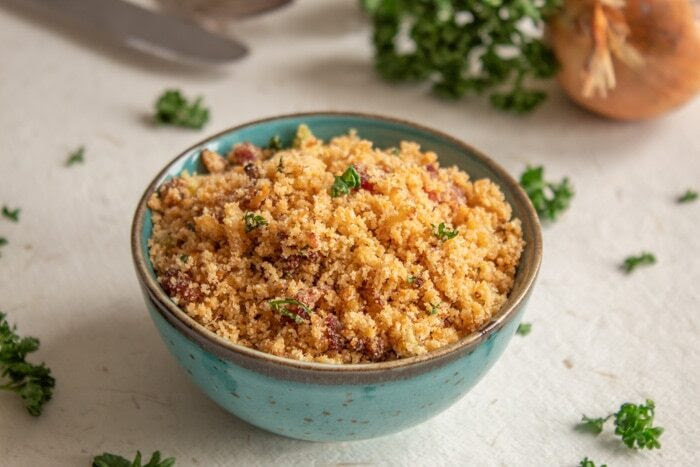
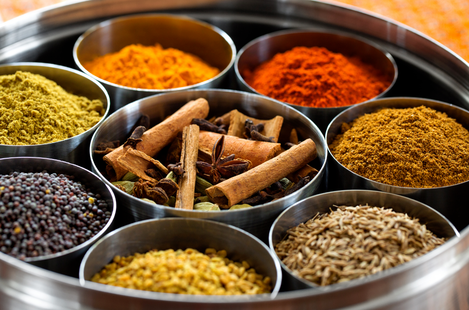
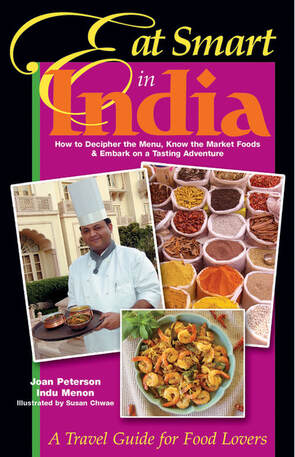
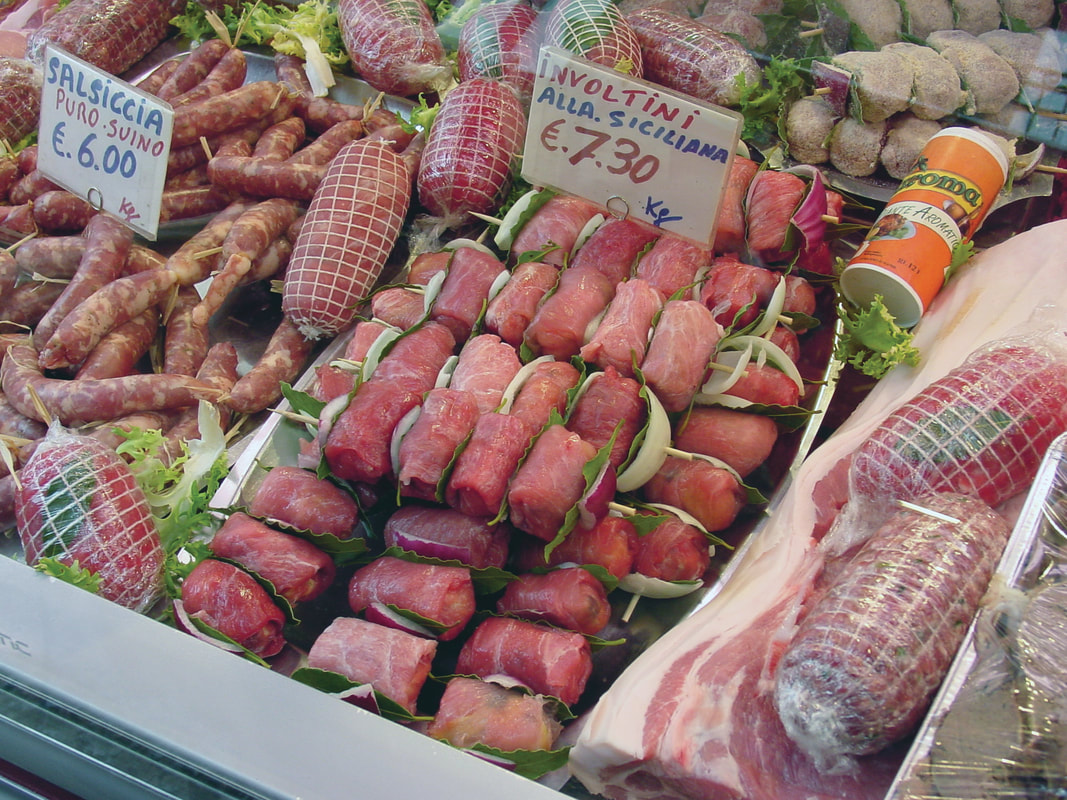
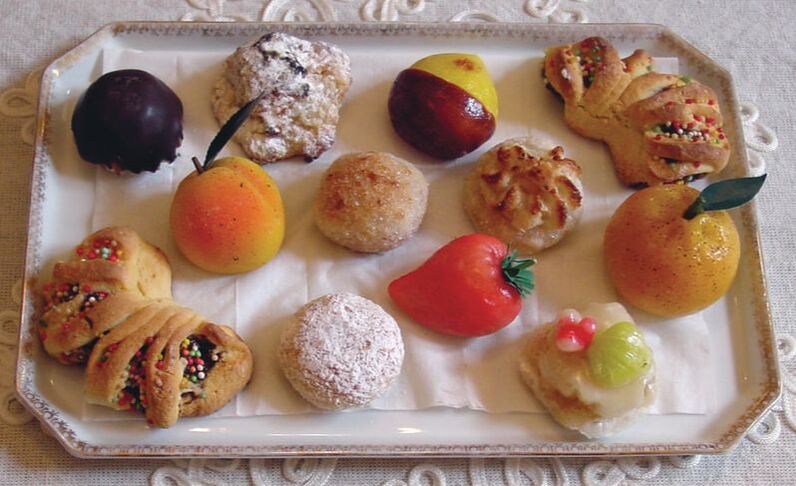
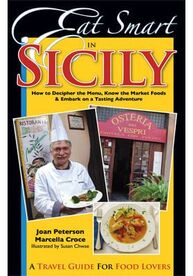
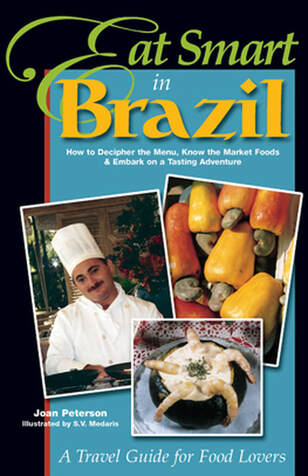

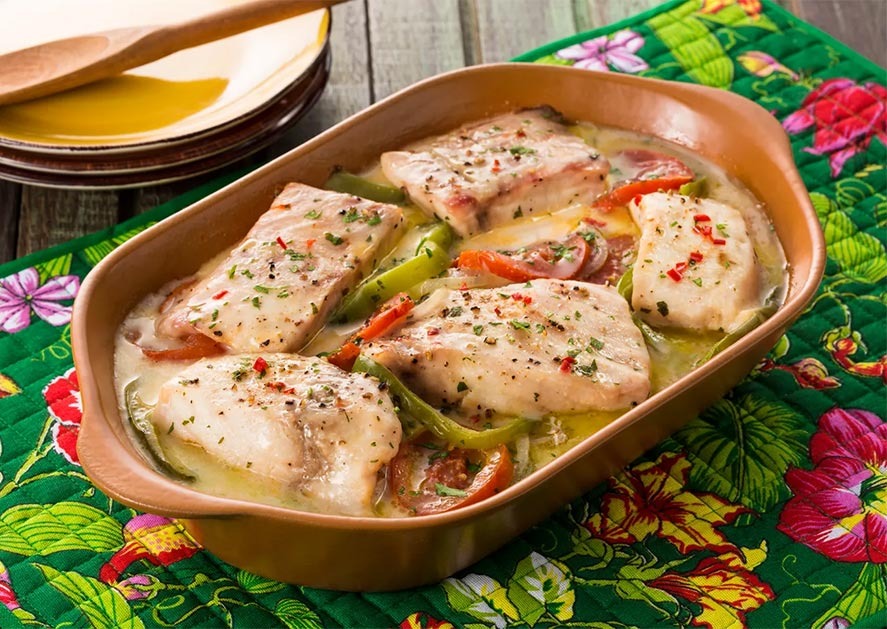
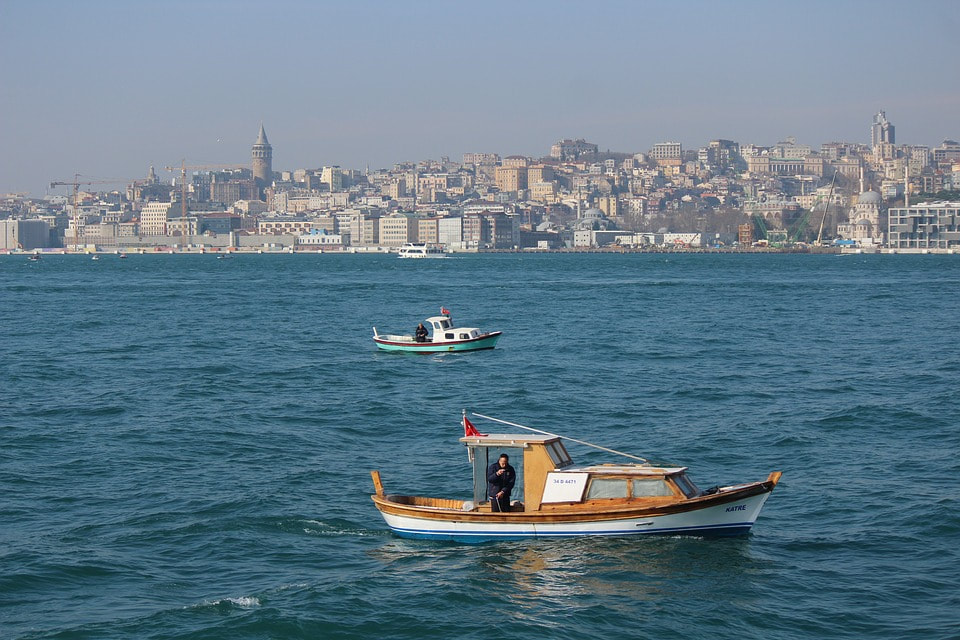
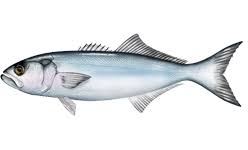
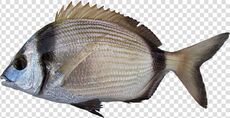
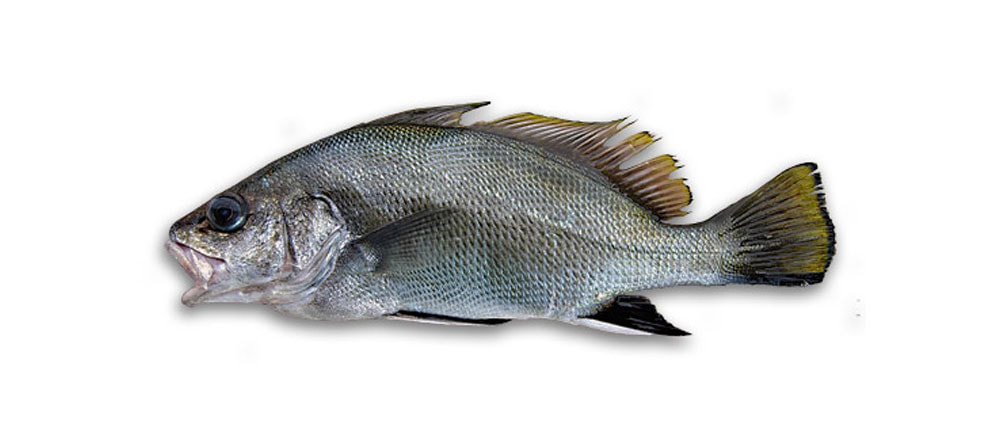
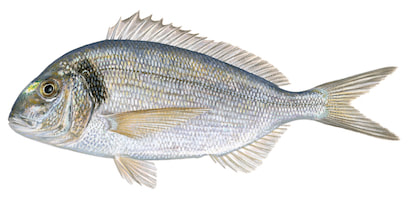

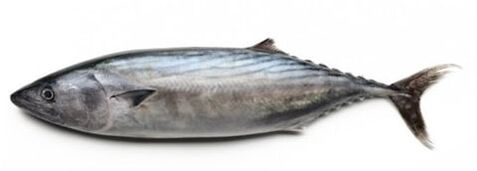
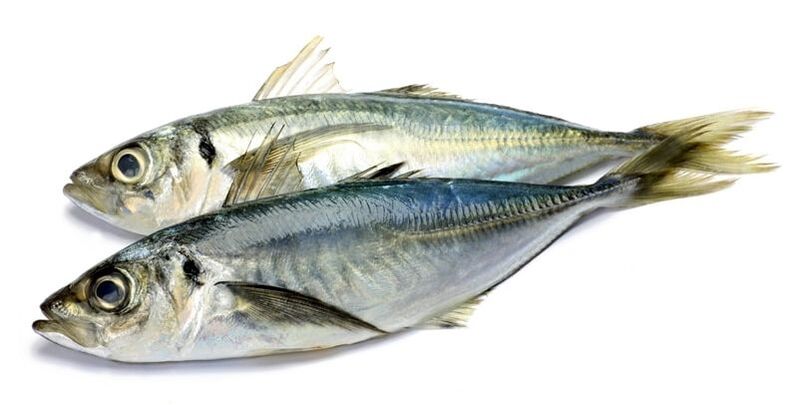

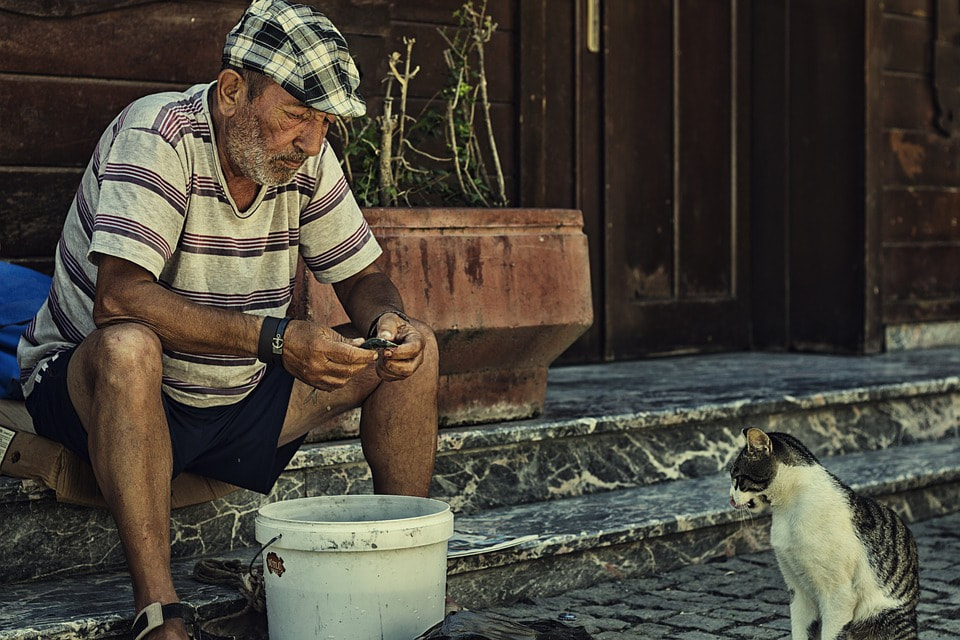
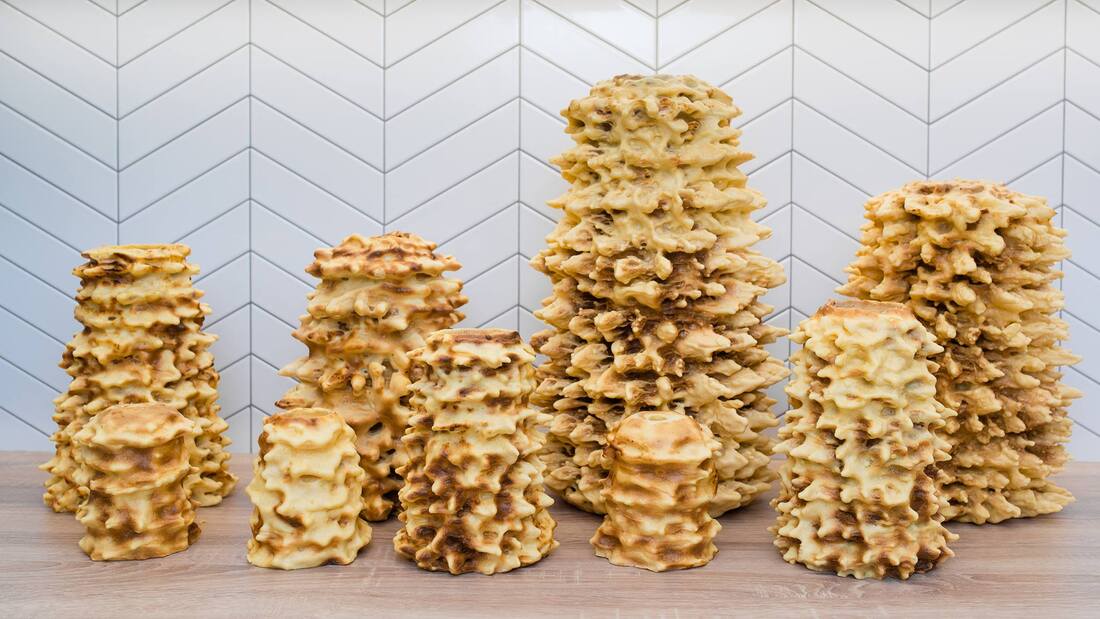
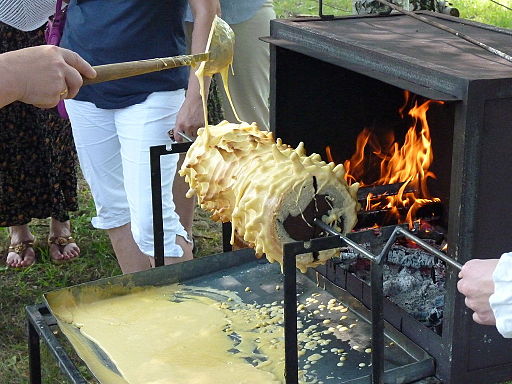
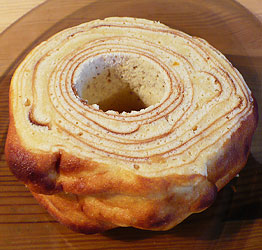
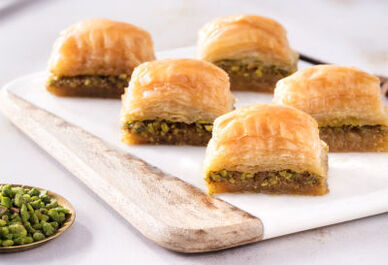
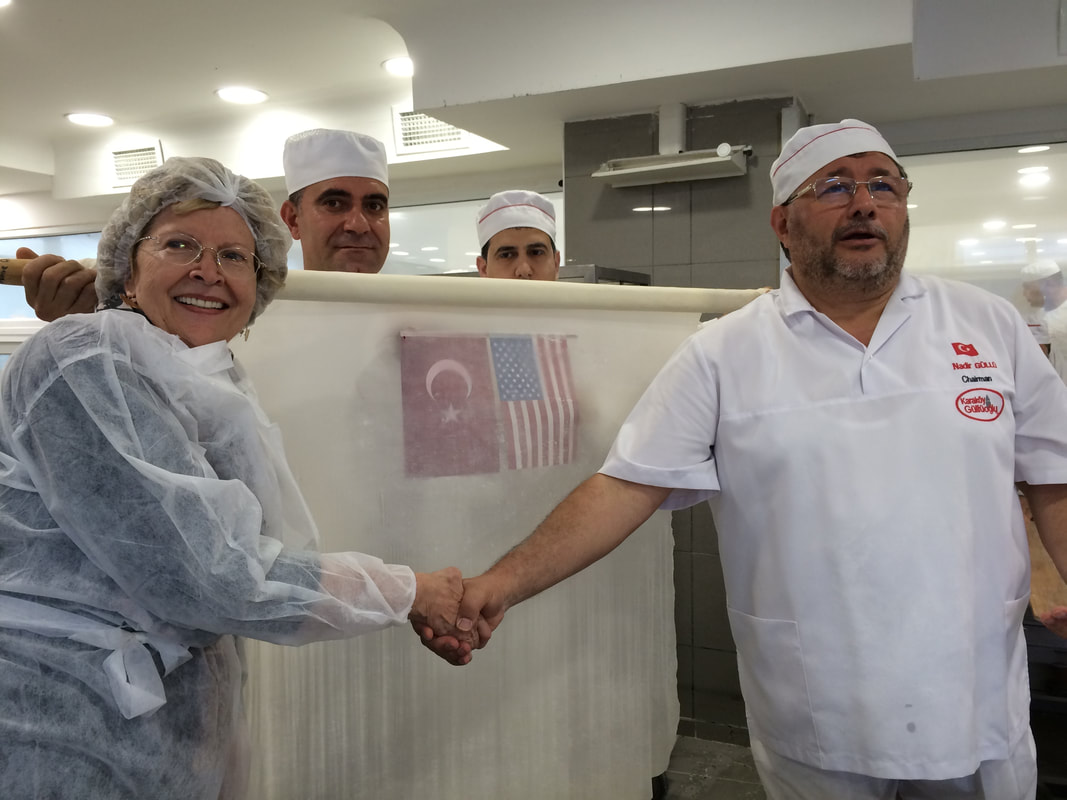
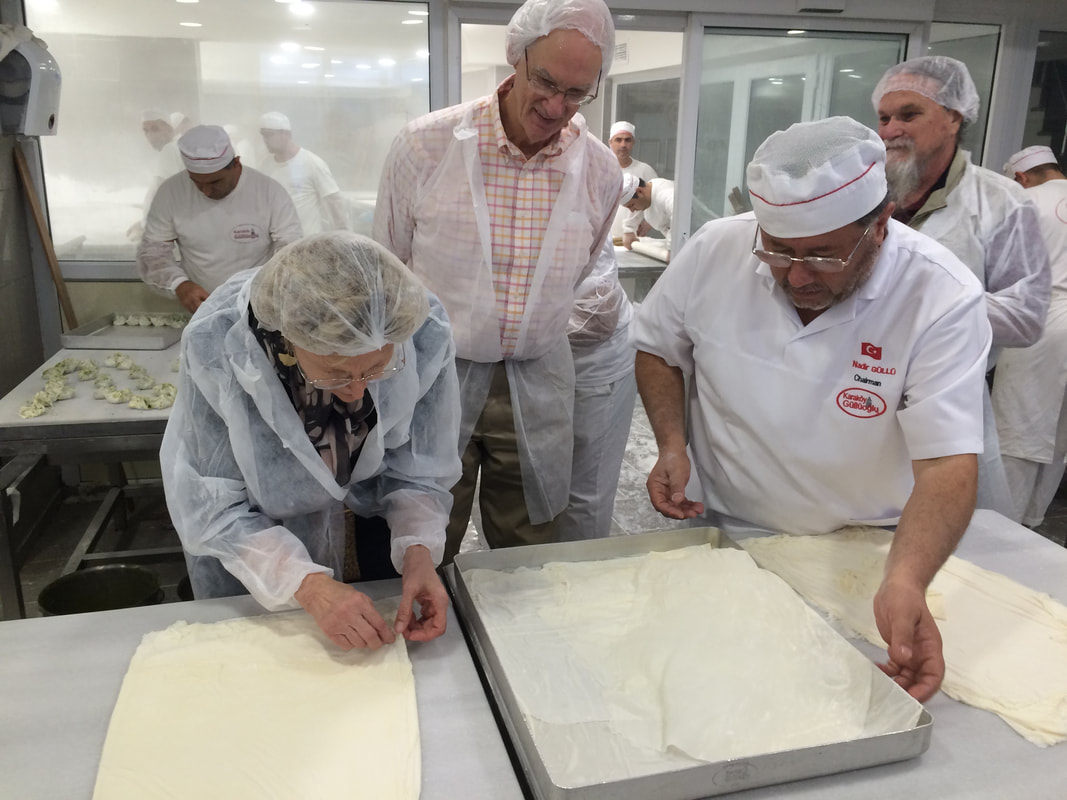
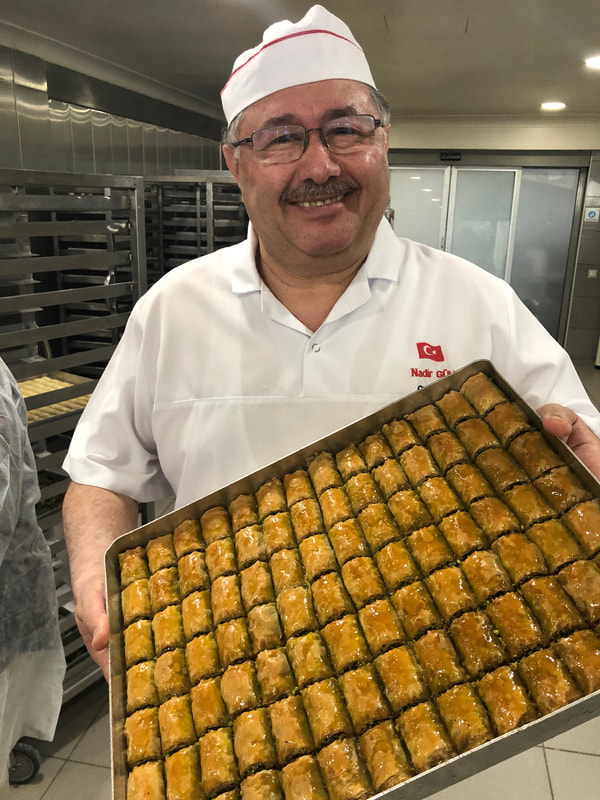
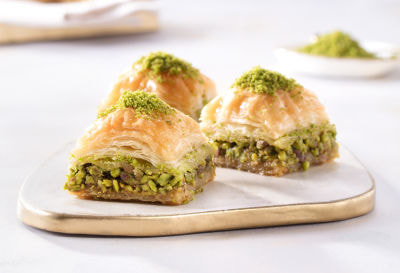






 RSS Feed
RSS Feed